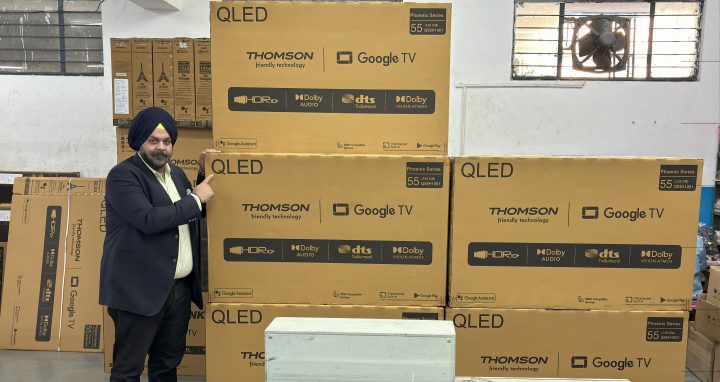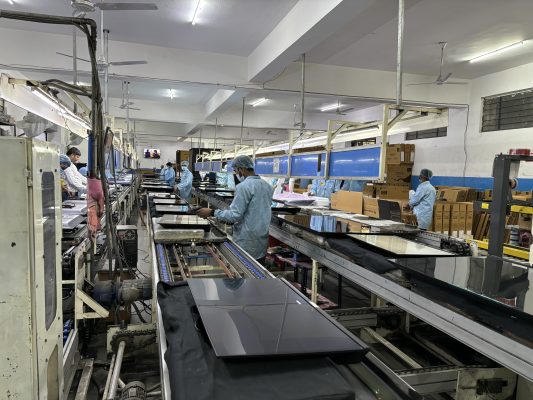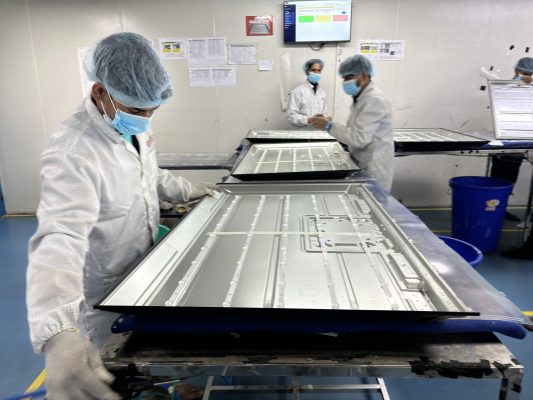
India has become an essential player in the global electronics market, especially when it comes to manufacturing televisions. Few companies have their own manufacturing unit, but Thomson stands out for its remarkable progress. Under Avneet Singh Marwah, CEO of Super Plastronics Private Limited(SPPL), had an exclusive brand licensee of Thomson in India. The company’s success is attributed to its focus on innovation, quality, and scalability while producing a wide range of televisions that cater to diverse consumer preferences, including LED and QLED TVs. I recently visited the Thomson Factory, where I gained insight into TV manufacturing in India, showcasing the journey from raw materials to finished products.
Upon entering the factory premises, the first impression was the organized chaos, with machinery humming, workers bustling about, and raw materials stacked neatly in designated areas. The tour began with an overview of the manufacturing process, starting from the assembly line where the various components of the TVs come together.

The assembly line is a carefully orchestrated dance of human and machine, with each worker assigned a specific task, such as placing components, attaching screens, and quality control checks. It was fascinating to witness the precision and efficiency with which the workers operated, ensuring that each TV met the highest quality standards.
One of the main highlights was observing the skilled labour force in action. The TVs are assembled at various stations going through a roller belt. Each section had specific tasks, such as attaching backlight LEDs, panels, installing motherboards, WiFi and conducting inspections. The integration of components tracking technology in the manufacturing process increased efficiency and reduced the margin of error, resulting in the production of high-quality products.

As we walked through the assembly line, we witnessed the transformation of raw materials into sleek and beautiful televisions. The factory produces TVs ranging from 32 inches to 75 inches, catering to different market segments. The process for manufacturing LED and QLED TVs follows a similar path, after which specialized techniques are employed for QLED panels to test picture quality and colour accuracy.
Quality control is a crucial requirement in the manufacturing process, with strict measures in place to ensure that every TV meets the highest standards. Random spot checks are conducted at various stages of production to ensure the quality is maintained. This commitment to quality is reflected in the final products, with TVs made in India gaining recognition for their reliability and performance. Moreover, during our visit, we saw a machine with a complete TV unit placed on it to test its ability to withstand the bumpy Indian roads while delivering the products across the country.
The tour ended with a glimpse into the SPPL warehouse, where rows upon rows of fully packaged TVs were neatly stacked and organized. It was an impressive sight, with each TV is ready for delivery across India. The warehouse was bustling with activity as workers were busy preparing the items for shipment, ensuring they were properly secured and labelled for their final destinations. It was clear that SPPL took great care in delivering their products to their customers, and seeing their dedication firsthand was truly inspiring.
Overall, the factory visit provided valuable insights into the complexities of TV manufacturing in India. Every aspect of the process, from the assembly line to the fully assembled package units, is geared towards producing high-quality televisions that compete in India. With a focus on innovation, automation, and sustainability, Thomson TVs will continue significantly contributing to the electronics industry.

